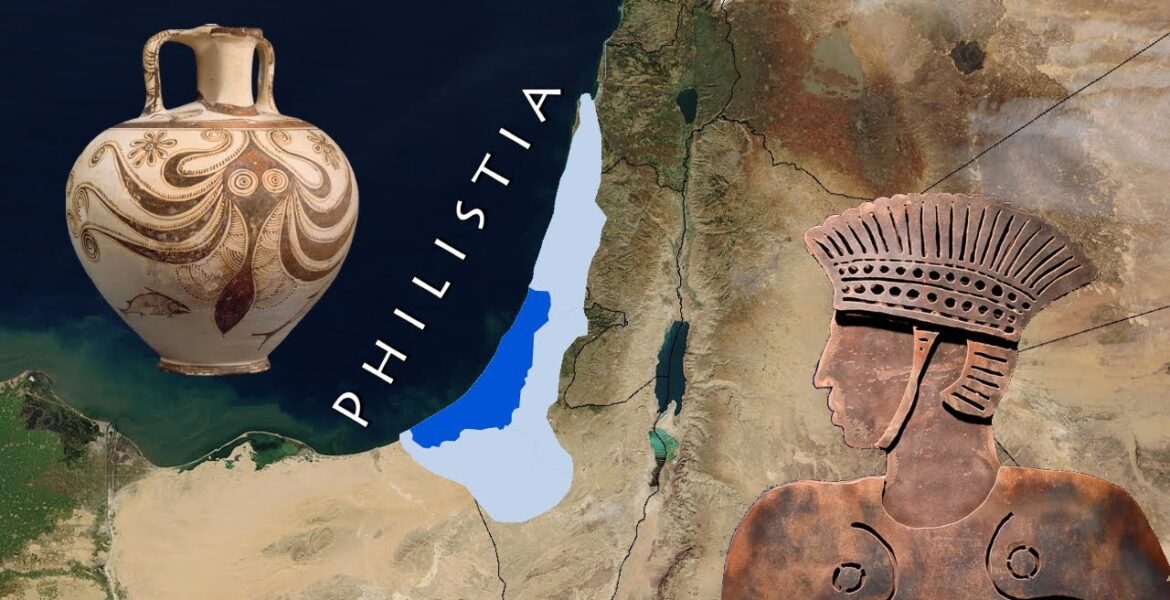Originally, the name "Palestine" finds its roots in the historical context of the Philistines, an ancient people, possibly related to the Greeks, known as the "Sea Peoples."
Modern archaeologists agree that the Philistines were different from their neighbours: Their arrival on the eastern shores of the Mediterranean in the early 12th century B.C. is marked by pottery with close parallels to the ancient Greek world, the use of an Aegean—instead of a Semitic—script
Now, a study published today in the journal Science Advances, prompted by the unprecedented 2016 discovery of a cemetery at the ancient Philistine city of Ashkelon on the southern coast of Israel, provides an intriguing look into the genetic origins and legacy of the Philistines. The research appears to support their foreign origin but reveals that the reviled outsiders were soon marrying into the local populations.
The study analyzed DNA from ten sets of human remains recovered from Ashkelon across three different time periods: a Middle/Late Bronze Age burial ground (about 1650-1200 B.C.), which pre-dates the Philistine presence in the area; infant burials from the late 1100s B.C., following the arrival of the Philistines in the early Iron Age; and individuals buried in the Philistine cemetery in the later Iron Age (10th and ninth centuries B.C.)
The four early Iron Age DNA samples, all from infants buried beneath the floors of Philistine houses, include proportionally more “additional European ancestry” in their genetic signatures (roughly 14%) than in the pre-Philistine Bronze Age samples (2% to 9%), according to the researchers. While the origins of this additional “European ancestry” are not conclusive, the most plausible models point to Greece, Crete, Sardinia, and the Iberian peninsula.
They inhabited the area now known as Gaza and established one of their main cities there. However, like many ancient civilizations, the Philistines eventually faded into history, their distinct identity disappearing around 2,500 years ago.
Approximately six centuries later, the Romans resurrected the name "Palestine" as they suppressed the Jewish Bar Kokhbar revolt between 132 and 136 BC. In the aftermath, they renamed the region that had previously been known as Judea to "Syria Palaestina." This new province was bordered by Syria to the north and Arabia Petraea to the east and south. Historical inscriptions indicate that during this time, Arabia Petraea was the primary Arabic-speaking region, encompassing Sinai, the Arabah (including Petra), the Transjordan (the region east of the Jordan River), and northern parts of the Hijaz (now in Saudi Arabia).
By the late fourth century, Syria Palaestina was divided into two smaller provinces: Palaestina Prima and Palaestina Seconda, with the latter also incorporating the Transjordan region. The area that had once been part of Arabia Petraea, including Sinai, Negev, and the Arabah, was now referred to as Palestina Salutoris (or Palaestina Tertia). By the time of the Islamic conquests in the 7th century, these three Palestinian provinces were home to a diverse range of ethnic groups, including Greeks, Aramaic speakers, Jews, settled Arabs, and Bedouin Arabs.
The Islamic conquest and subsequent occupation of the Levant in the 7th century by Muslim Arabs led to a process of Arabization, replacing Greek and Aramaic languages with Arabic.
Over the centuries, Palestine has seen waves of migration and settlement from various regions. This includes Arabs, Turks, and in the 19th century, Circassian and Chechen refugees. Additionally, as the local economy began to develop in the early 20th century, driven in part by a growing Jewish population, Palestine attracted economic migrants from different backgrounds.

